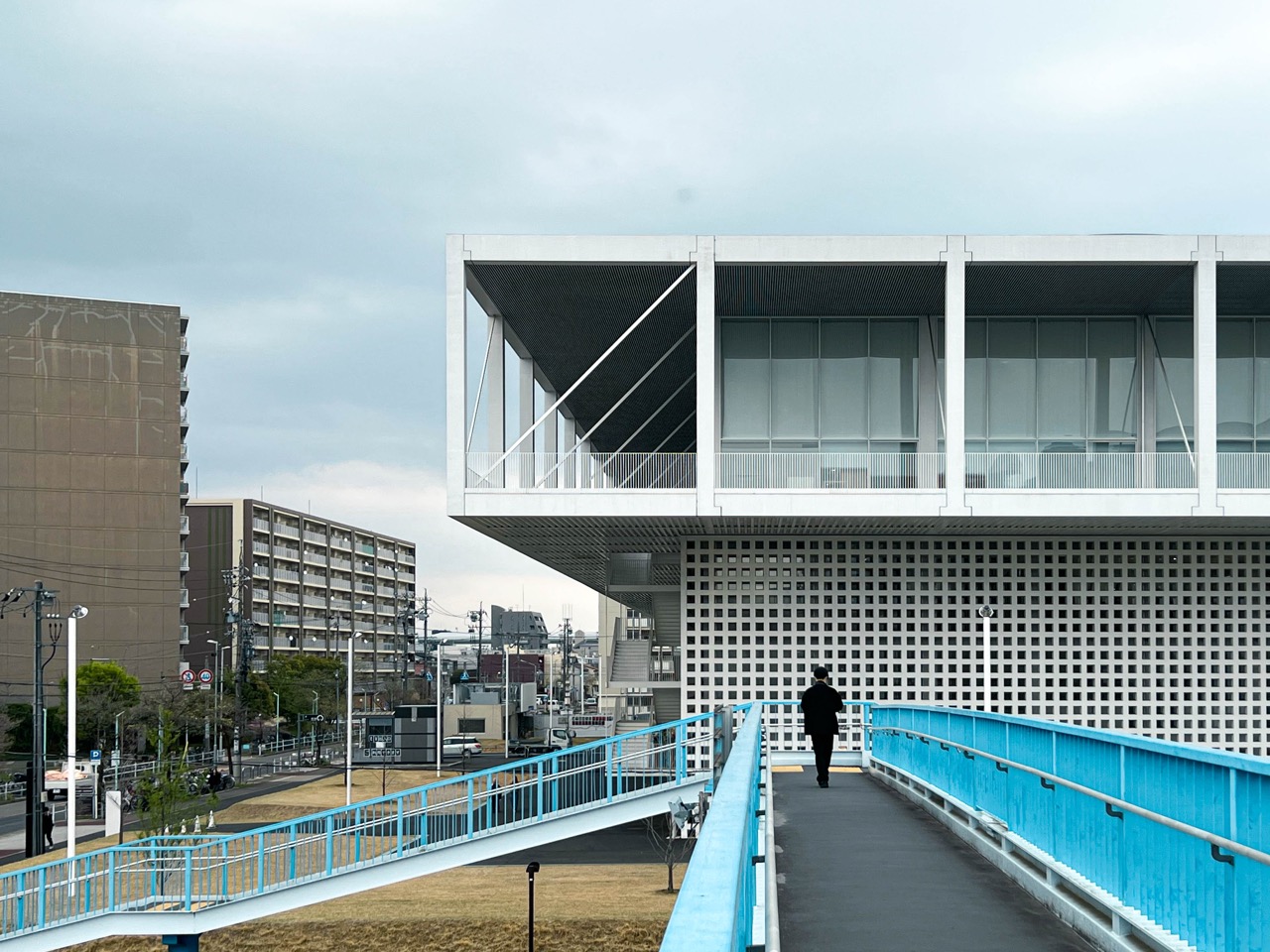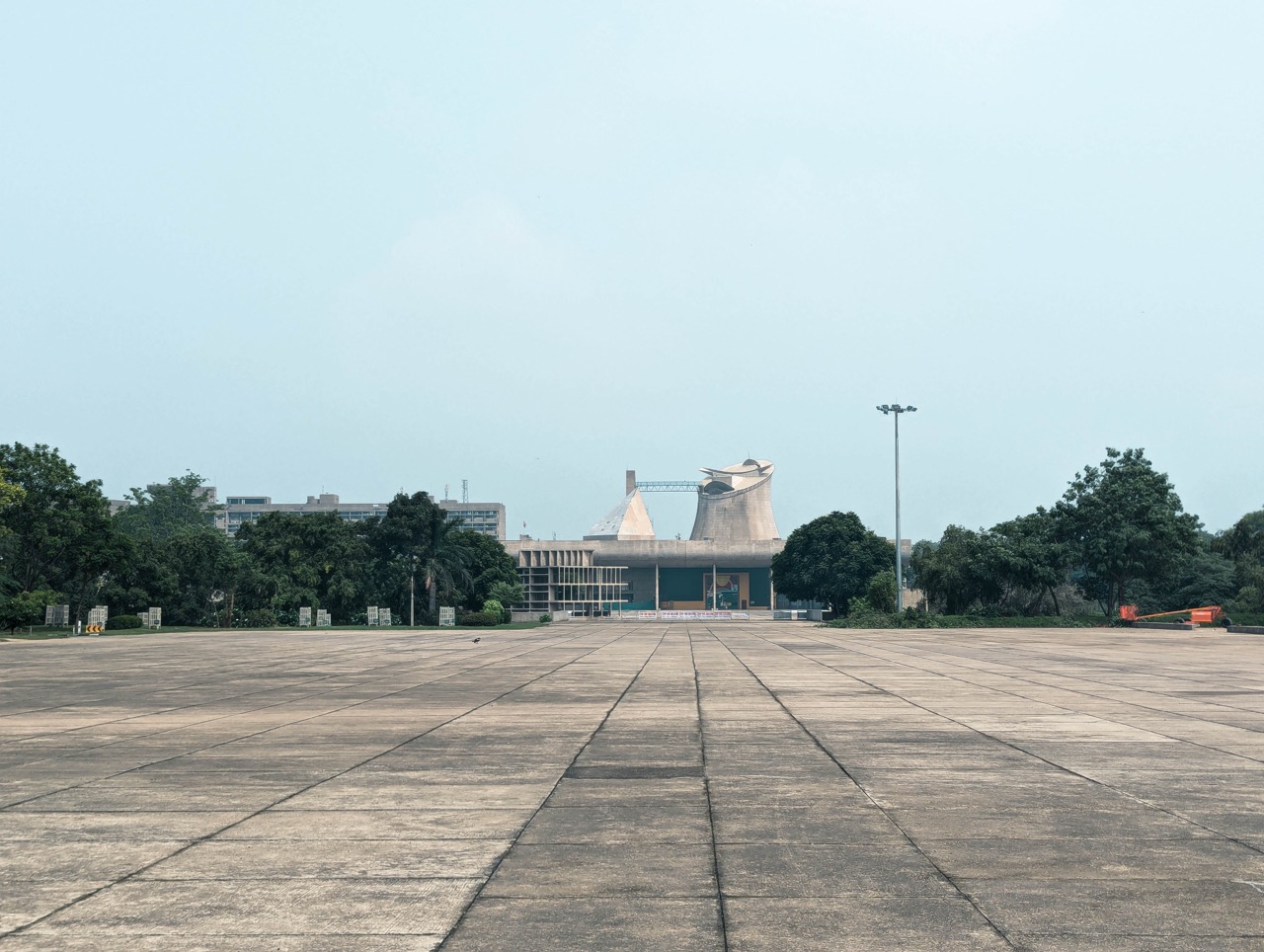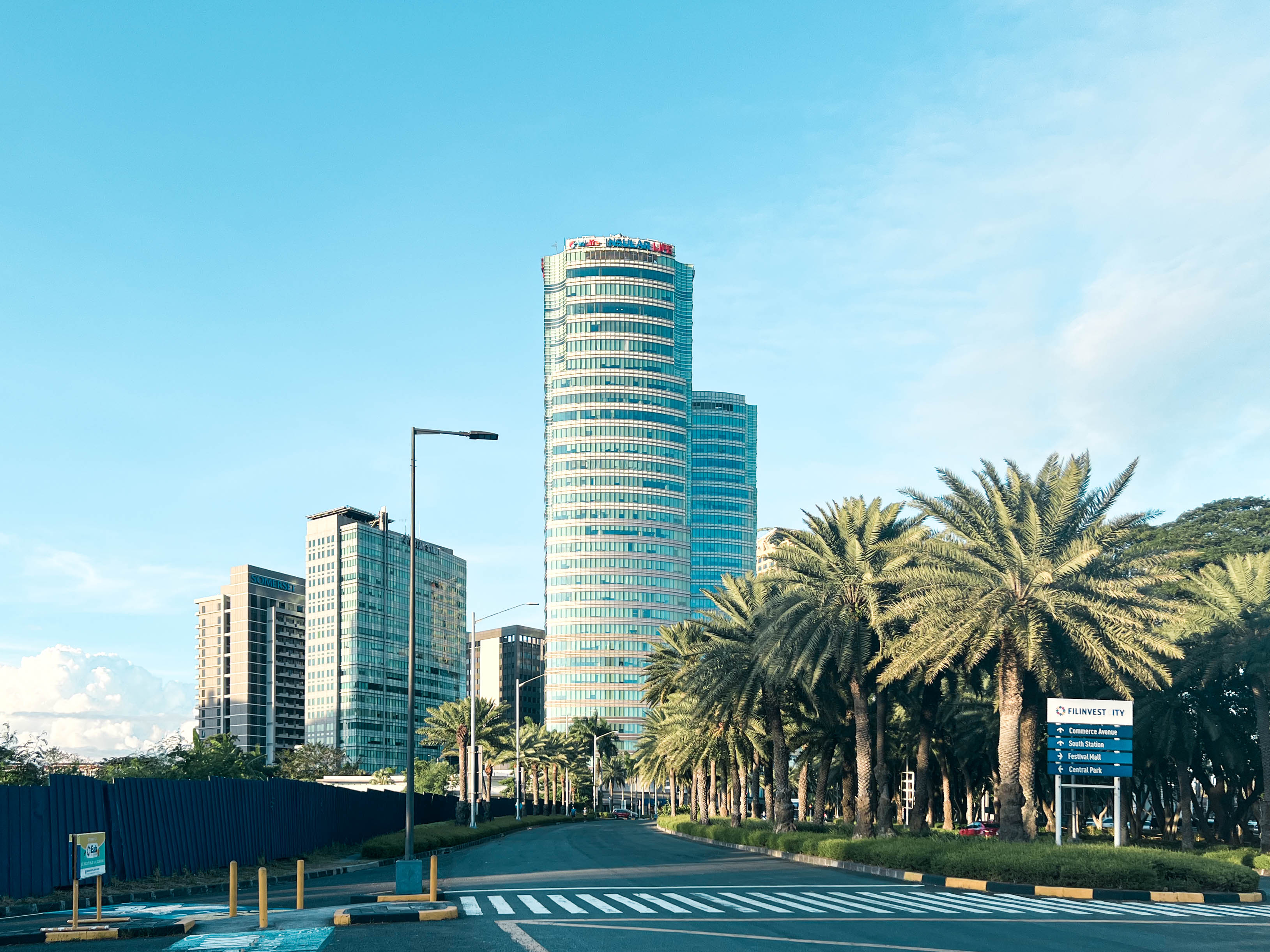Building knock-offs: what is originality in Architecture?
Words and photos by Gerald Jason Cruz.

As the taxi pulled away from Saadiyat I became filled with excitement. After 2 weeks of quarantine, I was getting to see Abu Dhabi for the first time. We began to cross the bridge to the main island and the full skyline of the city came into view. While I was looking in awe at the dozens of buildings in the distance, I saw something that felt oddly familiar. A group of three buildings connected with a cantilever at its top stood in front of the skyline. I soon found out that these buildings were called the Gate Towers, a residential complex in Al Reem Island. Instantly, an image of another building came into mind: The Marina Bay Sands (MBS) in Singapore. It too consisted of 3 towers connected with a skybridge, built around the same time, and is an iconic destination that I have visited before.
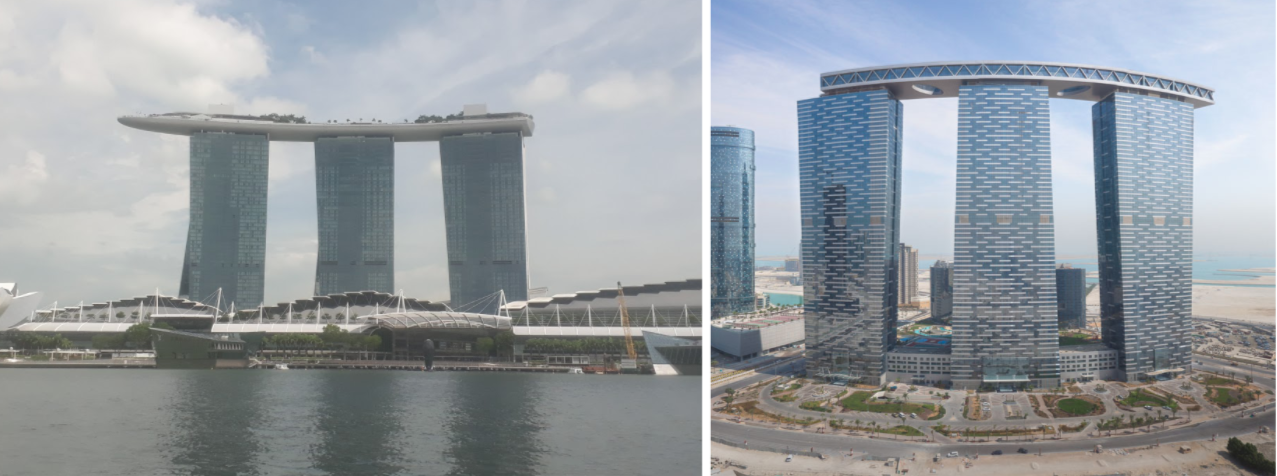 Marina Bay Sands, Singapore (Left) [1], The Gate Towers, Abu Dhabi (Right)
Marina Bay Sands, Singapore (Left) [1], The Gate Towers, Abu Dhabi (Right)
In theory, the Gate Towers were grander in every way– they were taller, bolder, and more impressive. Yet I had never known about them until now, and I instinctively thought it looked wrong when I saw them, as if it were a rip-off of Singapore’s. It reminded me of a discussion we had as a class about the nature of creativity and made me question: where do we draw the line in originality in Architecture?
A Utilitarian Mindset
The first thought that came to mind on the emphasis of aesthetics of architecture was that of modernism, which approached design with a utilitarian mindset. One of my favorite modernist architects, Mies van der Rohe, laid the foundations for the international style of architecture. I personally got to visit and study inside one of his buildings, Crown Hall. Everything from the bare facade that left steel beams and mullions exposed, to the vast and almost column-less interior highlighted his mantra: Less is More. Exploring this perspective made me realize the difference from simply just designing– architects are civil servants that have a duty to create and provide the spaces that we use daily. In the case of buildings, as their main purpose is to serve people’s needs, they should be designed in a way that fits that purpose. Similarities in design simply mean similarities in needs, and are therefore justified.
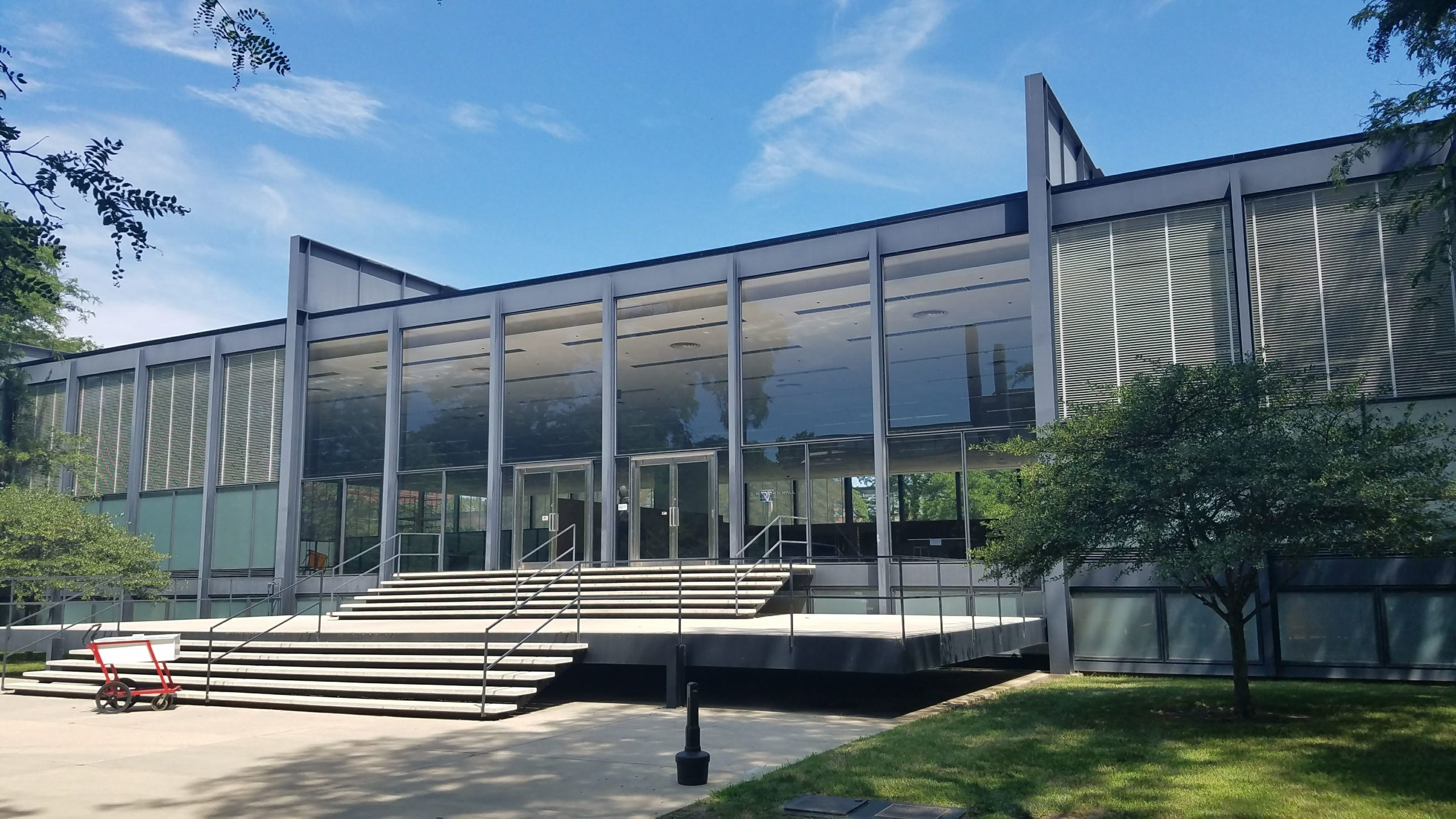 Mies van der Rohe’s Crown Hall, Chicago [2]
Mies van der Rohe’s Crown Hall, Chicago [2]
However this begs the question, to what extent can the limit of designing out of necessity be pushed? How can one determine whether a design is original or not? The consensus that my Re-Design class agreed on was that originality isn’t fixed. This stemmed from a discussion of knock-off designs of products. There is only ever one original design and everything else, including officially licensed items from the same designer, are simply re-iterations. Therefore, what makes a design unique (and ultimately more favorable) is the innovation that it brings, and how it pushes the original to bring something better to the table. In the case of buildings, it is definitely rarer to find these cases because there is usually only one original building, compared to mass produced products. What differs buildings from their form is their implementation, from the use of materials, to different scales and functionality. In my opinion, this range of options is what blurs the lines between copying and creativity, as it is easy to dismiss the Gate Towers of having a very similar shape to the MBS. Are they exactly the same? No. In fact, the Gate innovates by pushing the limits of the MBS’ scale. Yet their striking similarities are close enough at their scale to warrant attention.
 Marina Bay Sands, Singapore (Left) [1], The Gate Towers, Abu Dhabi (Right)
Marina Bay Sands, Singapore (Left) [1], The Gate Towers, Abu Dhabi (Right)
An Architecture’s Branding
The last piece of the puzzle is the influence of an architecture’s branding– the way that a design is perceived because of how it is presented. So why did the Gate Towers feel wrong to me? Branding. In the case of the Marina Bay Sands, Moshie Safdie, the head architect, designed it with the intent of making it a landmark of Singapore. Everything from its location right in front of the waterfront, to its logo, its tourist attractions (its infinity pool, observation deck, casinos), and its reputation are all engraved into its branding. Meanwhile the Gate Towers are simply marketed as luxury apartments for locals or potential investors. The power of branding and the familiarity principle that came along with the marketing and popularity of Singapore made the MBS recognizable. As someone who visited them first, I recognize some of the mere-exposure bias that went into my first impressions of the Gate Towers.
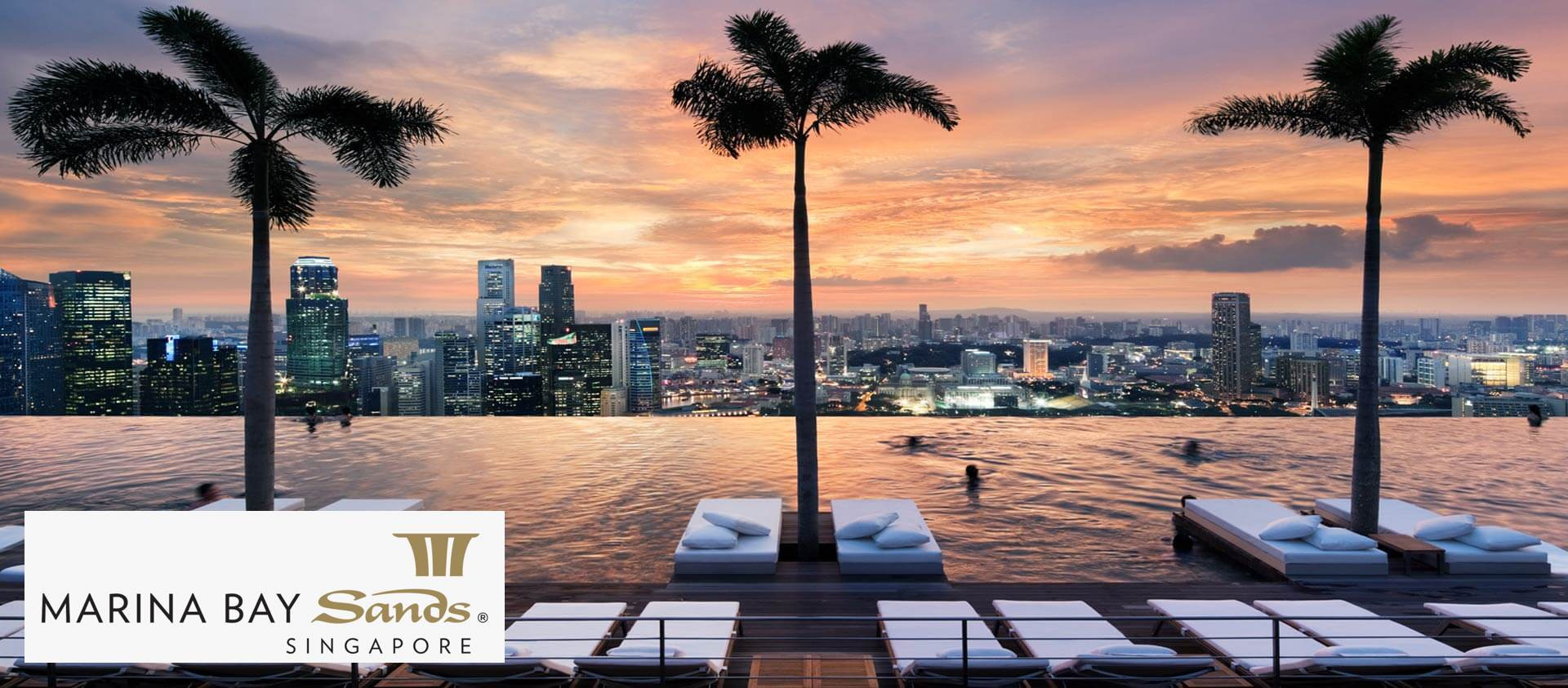 The Marina Bay Sands’ iconic infinity pool and logo solidify its branding
The Marina Bay Sands’ iconic infinity pool and logo solidify its branding
While it is tempting to label the Gate Towers as a lesser known knock-off, there is more nuance to how one examines the originality of a design. As architecture continues to evolve, so do the concepts and designs that they stem from. These innovations are what will continue to push the limits of the spaces we work and live in.
This essay was originally written for the class ‘Redesign’ in October 2020 and was first featured on the NYUAD Design website.
Photo credits:
[1] Cruz, Jason. Photo of Marina Bay Sands from Downtown Singapore. 12 Nov 2017.
[2] Cruz, Jason. Photo of Crown Hall at the Illinois Institute of Technology. 9 July 2018.
[3] Cruz, Jason. Photo of Marina Bay Sands looking up at the skydeck. 12 Nov 2017.
